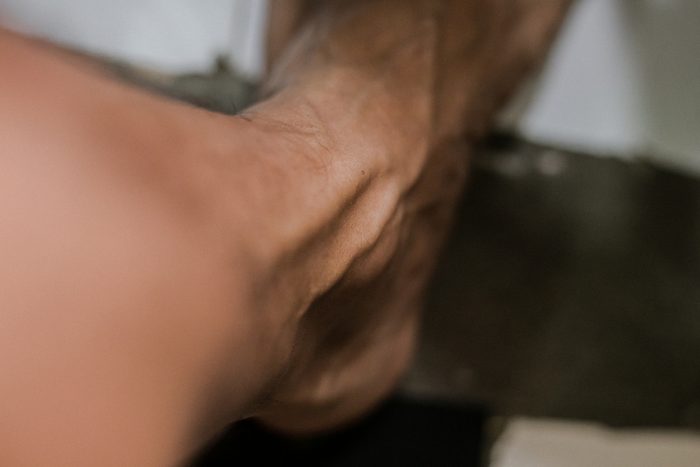
Ever wonder how that thingamajig on your whatchamacallit got its name? We have lots of weird body parts with lots of weird names. “The ancients tended to name things according to their shape—like some material item everyone was familiar with,” explains Mary Fissell, PhD, a professor in the history of medicine department at Johns Hopkins University and co-editor of the Bulletin of the History of Medicine. Here’s a look at how these common body parts got their names.

Coccyx
The proper name for your tailbone, coccyx was derived from the Greek word for cuckoo—“kokkux”—because the curved shape of the bone resembles the bird’s beak. Scientists consider your tailbone a vestigial structure, something humans no longer needed once we began walking upright; tails help other mammals balance. (Here are 11 body parts you never knew you had.)

Artery
The name for this important blood vessel that carries blood away from the heart hails from the Latin and Greek word “arteria,” which means “air holder.” Ancient anatomists thought arteries were air ducts because they didn’t hold any blood after death. Along with veins and capillaries, your body is home to an amazing 100,000 miles’ worth of blood vessels.

Palm
Thank Roman tradition for what we call the underside of the hand. It was custom to place a palm leaf in the hands of the winner of a contest during ancient times. The palm tree and the part of the hand both got their name from the Latin word “palma.” (Here’s why touch may be the most important of the five senses.)

Glabella
That smooth, rounded surface above your nose and between your eyebrows? Its name comes from the Latin word glabellus, which means hairless or bald. The glabella lines that develop over time are often the first wrinkles to show on the forehead. Which explains why the first spot to receive Botox was the glabella. (Curious about Botox? 10 things you need to know first.)

Lunula
The lunula describes the white, crescent-shaped area of at the tip of your nails, just above your cuticle. “Lun” is the Latin root for moon, familiar in words like “lunar,” of course. This area is the delicate part of the nail where keratin forms. It easily can be damaged. The lunula isn’t always visible on every nail but is often most seen on your thumbs. Your fingernails often can reveal things about your health. If the moons are discolored or change shape, they could be a sign of an underlying health condition.

Thyroid
This butterfly-shaped gland, located at the front of the neck, under your voice box, is named for the Greek word “qyreoeidh,” which means “large, oblong shield.” You have your thyroid to thank—or curse—for your metabolism: It produces thyroxine, the hormone that controls metabolism. (Here are 13 thyroid facts everyone should know.)

Hamstrings
Named for the way butchers used to smoke hams and hang the meat on hooks in the smokehouse by their ropelike tendons, hamstrings are the muscles that run along the back of your thighs. They’re responsible for helping you bend your knee and extend your leg. (Check out these 16 moves that fitness instructors think are a waste of time.)

Sartorius muscle
The longest muscle in your body is a narrow, ribbon-like one at the front of your thigh that crosses both the hip and knee joints. It’s activated when you sit cross-legged, like tailors used to do when they pinned hems or cuffs. In Latin, the word sartor means tailor. That’s how the sartorius got the nickname “tailor’s muscle.” (Keep reading for 7 strange body facts you’ve always wondered about.)

Uvula
That dangly pink thing at the back of your throat is Latin for “little grape,” which is kind of what it looks like. Scientists don’t fully understand exactly what the uvula does, but because it’s largely unique to humans, they suspect it plays a role in speech by secreting enough saliva to prevent dry mouth. In fact, dehydration, excessive smoking, infection, and allergic reactions all can cause the uvula to swell (a condition called uvulitis).

Iris
The colorful part of your eye wasn’t named for the flower. Rather, both uses of the word likely come from the name for the Greek goddess of the rainbow. She was believed to be a bridge between heaven and Earth, serving as a messenger of the gods. (Here are 4 things your eye color might reveal about your health.)
